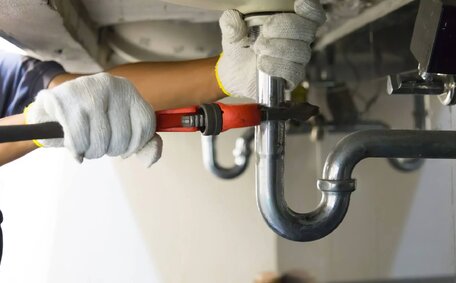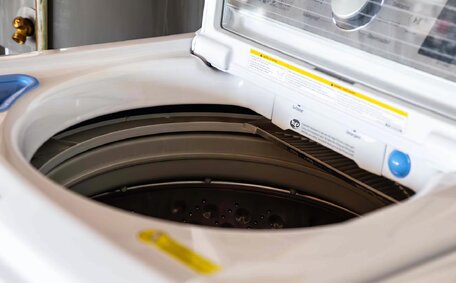Is having no hot water an emergency? Understanding the urgency
Having no electric hot water in your home constitutes an emergency. No hot water can disrupt essential activities such as showering, doing the dishes, and laundering. It also poses hygiene issues and safety risks, especially for the elderly and families with young children.
In regions like New South Wales, a lack of hot water is classified as an urgent repair under the Residential Tenancies Act. This means landlords or agents must arrange for repairs within 2 working days of being notified. As a vital water service, restoring hot water access is treated as a high priority.
Extended periods without electric hot water can cause considerable inconvenience. Ignoring even minor issues can lead to serious problems, including leaks, pressure buildup, and mould. Contacting a professional promptly is wise to prevent subsequent problems.
Common causes of loss of hot water
There are several common culprits behind a sudden loss of hot water:
- Electrical issues - Power outages, tripped circuit breakers, faulty wiring, or a broken thermostat can disrupt power to your hot water system.
- Gas supply problems - If you have a gas water heater, issues with your gas line like leaks, blockages or service disruptions could be preventing it from heating properly.
- Old heating elements - Over time, the electric heating elements in a hot water system wear out and must be replaced.
- System leaks - A water leak in the tank, valves or pipes allows hot water to escape rapidly, reducing your system’s efficiency.
- Closed water shutoff - Accidentally using the turn off mechanism on the cold water intake valve halts your water supply, preventing new water from entering to be heated.
- Sediment buildup - An accumulation of mineral deposits inside the tank reduces capacity and efficiency.
Identifying the precise problem demands investigation, but examining common sources provides a pragmatic starting point.
Troubleshooting Your Electric Water Heater
To troubleshoot an electric water heater, follow these critical steps:
- Check that the power supply is turned on at the fuse box or circuit breaker. Reset breakers or replace blown fuses.
- Ensure all electric connections to the thermostat and heating elements are intact.
- Check that your system’s thermostat is operational and press the reset button if one is available. Modern electronic thermostats may also have fault code displays.
- Check the high temperature limit switch or ECO (energy cut out) sensor designed to prevent overheating.
- Inspect heating elements for signs of wear, corrosion or damage. You can also have their resistances tested by a professional.
- Verify that the circuit provides adequate voltage for the water heater’s optimal function. Heating elements can fail or not perform properly if voltage is too low.
Prioritise safety when inspecting electrical components. Switch off hot water and all other power sources at your house prior to, and exercise caution while testing or adjusting system components. If you’re uncertain about diagnosing or remedying any issues, don’t hesitate to give us call for expert assistance.
Checking the fuse box and resets
For gas water heaters, firstly check that the gas valve is open and providing fuel. Here’s how to diagnose tripped breakers or blown fuses:
- Find the clearly labelled circuit breaker or fuse for the hot water system.
- Check if the fuse is still intact and the wire inside appears connected. Blown fuses may look blackened or the wire be visibly broken.
- For hot water heater circuit breakers, flip the switch fully off then back on again to reset it after 10 seconds. This will help restore power to the unit.
- Repeated fuse blowouts or breaker trips often signify faults with the heater element, thermostat, or wiring. Call an electrician for further diagnosis.
It’s vital to check for any specific switches or reset buttons unique to your hot water heater. Some thermostats have small buttons or resets that can help clear faults after tripping the breaker. If you do not see any changes after the circuit breaker is reset, contact a licenced electrician or plumber to inspect the system.
How to Test the Heating Element
If hot water output seems low or you have a complete loss of hot water, the electric heating element may be failing. Some signs include:
- Water takes a long time to initially heat up
- You find there’s not enough hot water and it runs out quicker than normal during use
- Temperature fluctuations or only lukewarm water
- Clunking noises as the element turns off and on
To test if the element is still working properly:
- Before you start, turn off the power at the circuit breaker to ensure your safety
- Remove the access panel on the tank to expose the heating elements
- Inspect the elements for mineral buildup or corrosion
- Use a multimeter to check the element’s resistance. Compare to the manufacturer’s specs
If the resistance readings are abnormal, the element may need to be replaced. Have a licenced electrician perform any replacements or complicated electrical testing. Never handle live electrical components without properly shutting off power first.
Gas water heater troubleshooting
Troubleshooting common issues with gas water heaters requires following safety-first steps:
- Check that the gas valve is open and supplying fuel to the unit. Verify there are no leaks.
- If equipped with an electronic igniter, ensure it’s sparking to light the pilot. Replace if faulty.
- Inspect that the pilot light is lit. Relight it if extinguished using the lighting instructions.
- Make sure the water heater tank is adequately filled. Refill if low to prevent damage.
- Inspect the flue vent and air intake to see if there any blockages if it fails to ignite or stay lit.
- Check the gas control valve or thermocouple. These may need cleaning or adjustment.
- Test the water temperature. If lukewarm, the burner flames may be set too low.
- Inspect the pressure relief valve. Signs of dripping could indicate issues.
If no hot water your household experiences persists after fixes, call a professional plumber or gas fitter to find out what might be affecting the system. Improper gas appliance repairs can lead to very hazardous situations.
Ensuring the pilot light is on
It’s critical to check that the pilot light on the gas water heater at your property is actually lit and burning properly. The pilot light provides the ignition source for the main burner every time your hot water tank is needed. Here are some tips for locating and inspecting it:
- The pilot light is typically found near the bottom of the water heater towards the front.
- Remove the access panel or carefully bend down to view the pilot light assembly.
- Check for a small, steady flame that should be blue in colour around the thermopile tip.
- If no flame is visible, the pilot light has gone out and needs relight your pilot light. Refer to the lighting instructions on the heater.
A pilot that frequently goes out or is very difficult to light can indicate an underlying issue such as:
- Insufficient gas line pressure
- Thermocouple failure
- Draughty area extinguishing the flame
- Burner orifice blockage
In case of a natural gas odour, don’t attempt to relight the pilot; immediately contact a professional plumber or give us a call.
Testing the thermocouple
The thermocouple is an essential component of gas water heaters. It is a heat-sensitive device that detects the pilot light flame. When the pilot light heats the thermocouple, it generates a small electrical voltage that signals the gas valve to open and allow gas to flow to the burner.
Follow these steps to test your thermocouple if you’re experiencing no hot water:
- Ensure that the pilot light is lit and burning consistently. The small flame should be enveloping the thermocouple’s metal tip.
- Using a multimeter set to the millivolt range, attach one probe to the copper sheathed part of the thermocouple and the other probe to the gas valve or thermopile terminal.
- With the pilot light on, check the multimeter reading. It should register between 15 to 30 millivolts.
- Blow out the pilot light flame and observe the reading drop to 0 millivolts. When reheated, it should climb again.
If the voltage reading fails to register despite the pilot flame present or does not respond when the flame is removed, the thermocouple is defective and requires replacement.
For safety, turn off all gas valves and close supply lines before testing electrical components or relighting the pilot light. Call a professional plumber immediately if ever a strong gas odour is detected during inspection.
When to call a professional plumber
While basic troubleshooting can resolve minor gas water heater issues, professional plumbing help is sometimes essential.
Contact your local licenced plumber right away if you detect a gas leak. Any gas odours or hissing sounds signal potentially hazardous situations requiring immediate professional attention for everyone’s safety.
You should also call a plumber promptly if you have no hot water at all after attempting basic fixes. A complete loss of hot water typically indicates an underlying problem needing assessment by a qualified technician to correctly diagnose and resolve.
Likewise, if you have blocked drains or discoloured water coming from taps throughout your home, this points to a larger issue that DIY remedies cannot adequately address.
Seek urgent assistance from Carlingford Plumbing Services for your water heater in any of these scenarios:
- Pilot light repeatedly goes out
- Water heater makes popping or rumbling noises
- Leaking valves, tanks or pipes
- Faulty thermostats or control valves
- Damaged or worn out heating elements
- Pressure relief valve dripping
- Sulphur smells from the hot water
Our skilled, licenced technicians can swiftly address and repair issues to safely restore your hot water supply. Don’t hesitate to give us a ring for reliable service even on nights and weekends.
How to Prevent Future Hot Water System Problems
Preventing future problems with hot water systems starts with some simple maintenance habits and being attentive to their needs:
- Conduct monthly examinations of external parts like valves, pipes, and connections. Look for any leaks, damage or loose parts.
- Flush out the water heater once a year to clear sediment that reduces capacity and efficiency.
- Regularly ensure water flows unimpeded from your pressure relief valve overflow pipes to the drain.
- Consider replacing heating elements and anodes every 5-8 years as preventative maintenance.
- Insulating exposed pipes in your water systems can maximise heat retention and enhance efficiency.
- Install water-saving showerheads and tap aerators to put less demand on the system.
- When doing laundry, spread out loads evenly over the week instead of all at once.
- If necessary, upgrade to a more energy-efficient or higher-capacity hot water unit.
Arrange for a professional tune-up inspection annually for optimal maintenance. The technician will check all components like thermostats, heating elements, anode rods and valves. Preventative maintenance from a licenced plumber or gas fitter is wise for maximising the lifespan of your hot water system.





